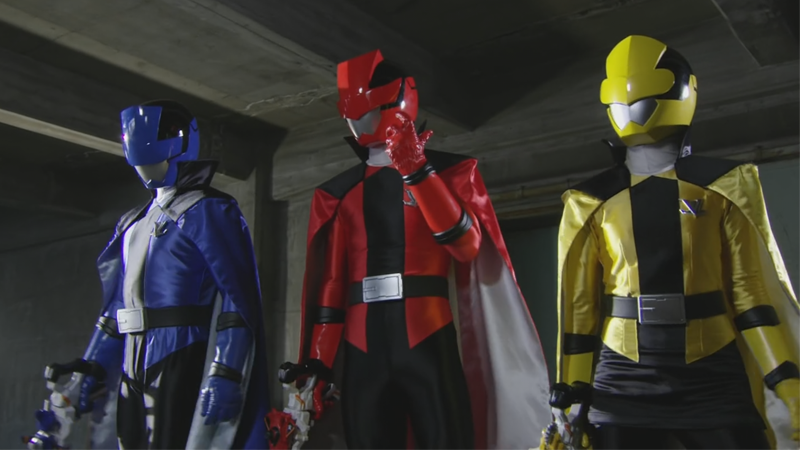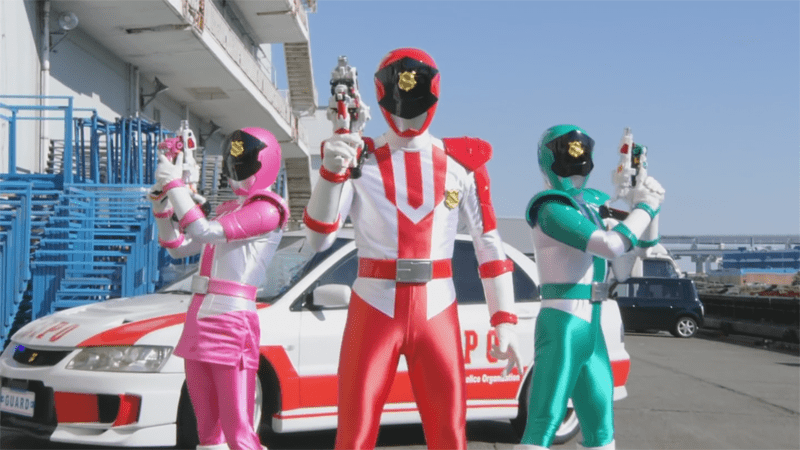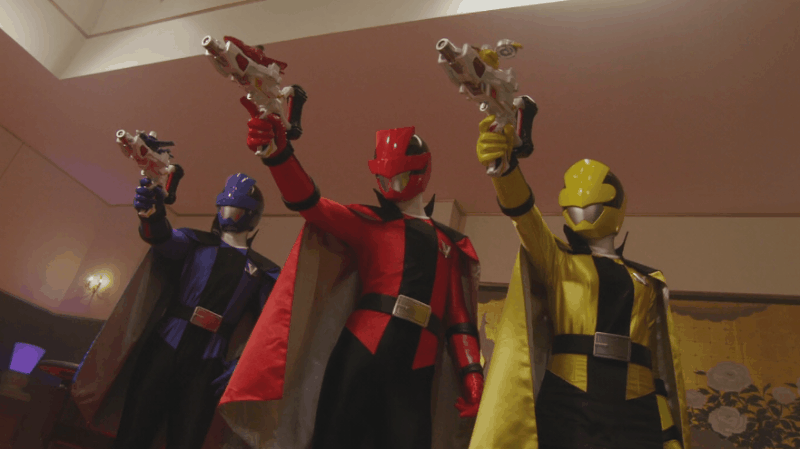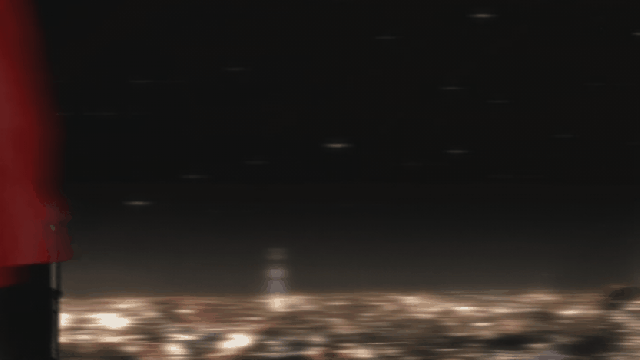The fabulous, cape toting Lupinrangers of this year’s Super Sentai series, Kaitou Sentai Lupinranger vs Keisatsu Sentai Patranger.Screenshot: Toei
When you think of a superhero — not a specific character, just the idea of a superhero – chances are he or she is wearing a cape. Capes are one of, if not the, most iconic pieces of superhero iconography around. That is, unless you look at the glut of live-action superheroes we have on TV and film right now, where there are practically none to be found.
Sure we have some heavy hitters on the cape front, in that most of the characters who are meant to have capes have made it to the big screen with them intact. There’s Batman and Superman for DC, and Vision, Doctor Strange, Thor (well, his cape is on and off, and while he rocked a half-cape in Ragnarok, it looks like he’s losing it for Infinity War), and Valkyrie for Marvel. On TV, it’s pretty much just the heroes on Supergirl.
That may seem like a lot, but they represent a drop in the sea of smart, practical, and sometimes even lovely capeless costumes. And then on top of that, in some rare cases like Scarlet Witch and even Gamora, you’ve got characters who had caped costumes in the comics that have been wrenched from their backs for live-action – instead, they’re seen wearing long coats, because movie execs and costume designers sadly think a coat looks “practical,” and goodness knows all superheroes need to look practical.
Practicality really is the bugbear here. It’s a design philosophy brought to memetic life by The Incredibles‘ infamous Edna Mode, whose stirring putdown of capes singlehandedly set superhero design back years when she ranted about how dangerous they could be:
But it also speaks to the overriding thought that, when comic book characters are translated to the big screen, we must ground them, and we must make them real and feasible… as much as we can make billionaire genius robot-suit-powered men and Amazonian demigoddesses feel “realistic.” We can accept that super-powered beings and aliens from another world exist, but what if they wore a cape and Spandex while they were fighting evil? Perish the thought! Hey, here’s a question: Why are we asked to suspend our disbelief that superpowers exist, but not that our superheroes would also want to look absolutely fabulous while using them? Besides, capes are more than just nice accessories. As I said above, they’re an important, integral part of the visual language of superheroes, and have been from the very beginning, and even before that, reaching into inspirational figures like Zorro and the “cape and sword” swashbuckling genre — and beyond even that into historical fashion.

Did I mention their helmet facemasks are top hats, because they’re phantom thieves? No? Seriously, these costumes are spectacular.Screenshot: Toei
A new piece of superhero media that understands the finer art of the cape comes not from our Western shores, but Japan. It’s the new Super Sentai show — part of the long-running series that gets adapted into Power Rangers in the US — that kicked off a few weeks ago, titled Kaitou Sentai Lupinranger vs Keisatsu Sentai Patranger. It’s vaguely like Batman v Superman in that both of the title groups are heroes, trying to save the day by taking a legendary collection of Arsène Lupin artifacts (the gentleman-thief character created by early 20th-century French author Maurice Leblanc) out of the hands of alien gangsters, but disagree on each side’s methods. It’s all wonderfully silly, as the best Super Sentai shows are.
As you could surmise from their name, the Lupinrangers are akin to superheroic gentlemen-thieves as well. They have charm and style, and most importantly, capes, as you can see in the picture above. The Patrangers, meanwhile, are the more antagonistic heroes — they’re no-nonsense, by-the-book, Spandex-wearing cops, which is instantly perceivable by the fact that they are capeless narcs:

These are honestly also fantastic bits of design – police hat masks! – but are definitely worse for wear without at least a good half cape.Screenshot: Toei.
A direct comparison might be a little unfair, given that Super Sentai and the latest comic book blockbusters are serving very different audiences, and their designs are born from very different levels of budget. Candy-coated spandex costumes like this are mostly saved for kids’ TV (like, say, Power Rangers, for obvious reasons). But from a purely visual standpoint, it’s hard not to be drawn to the billowy flair of the capes on the Lupinrangers, especially in comparison to our leathery masses of heroes wearing overdesigned armour, muted colours, military aesthetics, and above all, far too few capes.
Look, I’m not arguing that we force Iron Man, Spider-Man, or Wonder Woman into capes in their next movies. I just want to end the cape stigma. Superheroes are meant to stand out and above from the common people they protect; heroes who wear capes stand out even further, and they look wonderful while doing so. There’s an nostalgic dynamism to a cape, one that harkens back to the classic heyday of these comic characters Also, to briefly bring this back to Lupinranger vs Patranger? Capes are also just really bloody cool.

Oh, that’s the good stuff. Edna Mode has a lot to answer for by the time Incredibles 2 comes around.
